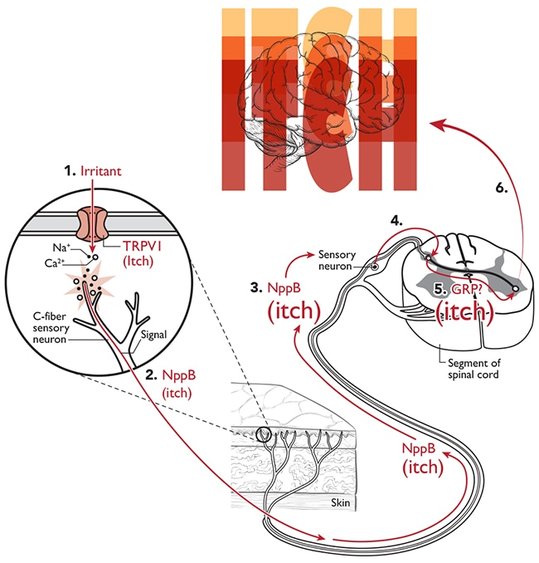How many of you have experienced an itching sensation that simply won’t go away until you scratch it? Well, what if after the scratching, that itch sensation comes back minutes later? What if this is happening all over your body, on the palms of your hands, behind the top part of your ear where it meets your head, in between your toes, and in your armpits? In fact, it’s so continuous that once you stop scratching one region, you move to another, and then another, until every minute you are stopping what you are doing to scratch. What if you scratch to the point that you begin to bloody those patches of skin?
These are the experiences that made me want to focus on the itch factor, which is actually a little known phenomenon as to what exact purpose it serves and how, when only 5% of all your sensory nerves have the ability to send the “itch” signal to the brain, it can really cause a disruptiveness and destructiveness in a person who is experiencing such insatiable itch.
So, let’s start out with the basic physiology.
An irritant of some sort can get into your body in many ways. The obvious one is eating. But it can also get through your skin cells through these little channels found in every cell’s walls. Like doors where some go in or out, or some that lead into restaurants while others lead to bakeries, these channels in and out of the cell are equally as diverse, while also being multipurpose (i.e., going in AND out of a restaurant, or leading into both restaurant and bakery).
One in particular is called the TRPV1, but unless you’re an itchy-causing substance, you’re not going to get through this door (1). If you ARE an itchy irritant, then not only do you get into the cell, but now you can gain access to a nerve ending. Furthermore, you’ll be able to stimulate a C-fiber, a class of neuron that can produce NppB, or natriuretic polypeptide b (2), THE itch neurotransmitter. And this is where the tortuous itching begins.
Using a dedicated circuit, or route, to the brain (3,4) via the spinal cord, along with a possible intermediary neurotransmitter (5), the firing neuron sends the message to your brain that says “ITCH!” (6).
So what do you do?
SCRATCH!
These are the experiences that made me want to focus on the itch factor, which is actually a little known phenomenon as to what exact purpose it serves and how, when only 5% of all your sensory nerves have the ability to send the “itch” signal to the brain, it can really cause a disruptiveness and destructiveness in a person who is experiencing such insatiable itch.
So, let’s start out with the basic physiology.
An irritant of some sort can get into your body in many ways. The obvious one is eating. But it can also get through your skin cells through these little channels found in every cell’s walls. Like doors where some go in or out, or some that lead into restaurants while others lead to bakeries, these channels in and out of the cell are equally as diverse, while also being multipurpose (i.e., going in AND out of a restaurant, or leading into both restaurant and bakery).
One in particular is called the TRPV1, but unless you’re an itchy-causing substance, you’re not going to get through this door (1). If you ARE an itchy irritant, then not only do you get into the cell, but now you can gain access to a nerve ending. Furthermore, you’ll be able to stimulate a C-fiber, a class of neuron that can produce NppB, or natriuretic polypeptide b (2), THE itch neurotransmitter. And this is where the tortuous itching begins.
Using a dedicated circuit, or route, to the brain (3,4) via the spinal cord, along with a possible intermediary neurotransmitter (5), the firing neuron sends the message to your brain that says “ITCH!” (6).
So what do you do?
SCRATCH!


 RSS Feed
RSS Feed
